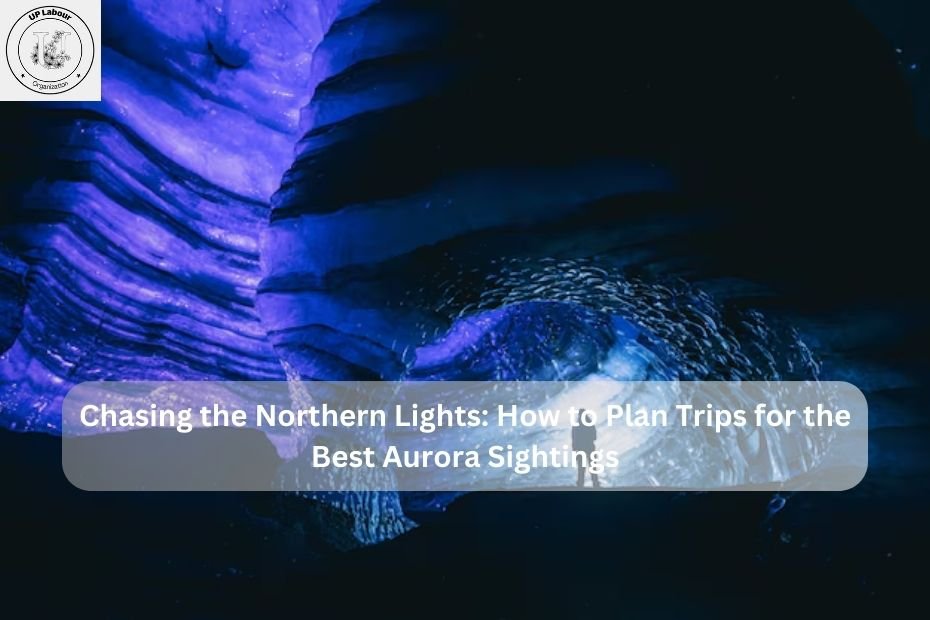Imagine standing under a starry sky, where vibrant ribbons of green, purple, and pink dance across the horizon. This breathtaking spectacle is the Northern Lights, or Aurora Borealis, a natural phenomenon that captivates the hearts of adventurers and dreamers alike. If you’ve ever wanted to chase this magical light show, you’re in the right place! Here’s a guide to help you plan your trip for the best aurora sightings.
Understanding the Northern Lights
Before you embark on your journey, it helps to understand what the Northern Lights are and how they occur. The auroras are caused by solar particles colliding with gases in Earth’s atmosphere. When these particles hit the gases, they create bursts of light. The colors of the aurora depend on the type of gas and the altitude at which the collisions occur. For instance, oxygen at higher altitudes can produce red and purple lights, while at lower altitudes, it gives off green lights.
Choosing the Right Destination
The first step in planning your trip is to pick a location known for aurora sightings. Here are some of the best spots in the USA to chase the Northern Lights:
1. Fairbanks, Alaska
Fairbanks is often considered the best place in the United States to see the Northern Lights. The city lies under the “auroral oval,” a ring around the North Pole where auroras are most frequently seen. The best time to visit is between late August and April, with peak activity usually occurring in the winter months.
2. Anchorage, Alaska
While Fairbanks is the top spot, Anchorage also offers great chances to see the auroras. Plus, it’s a larger city with more amenities, making it easier for families or those less inclined to rough it. You can view the lights from many locations, such as Kincaid Park or even from the city itself on clear nights.
3. Yellowstone National Park
If you’re looking for a unique experience, try seeing the Northern Lights from Yellowstone National Park. Although sightings are less frequent than in Alaska, the park’s stunning landscapes provide a fantastic backdrop for the lights. The best months for viewing are typically from September to March.
4. North Dakota
The open skies of North Dakota are perfect for aurora sightings. Areas like Theodore Roosevelt National Park offer dark skies away from city lights. Plan your trip during the winter months for the best chances.
5. Minnesota’s Boundary Waters
This pristine wilderness area is not only ideal for outdoor activities but also for chasing the Northern Lights. The Boundary Waters Canoe Area Wilderness has minimal light pollution, making it an excellent location for viewing the auroras. Visit between late fall and early spring for the best chance.
Timing Your Trip
Timing is crucial when planning your Northern Lights trip. Here’s how to increase your chances of witnessing this spectacular phenomenon:
1. Seasonality
The Northern Lights are most visible during winter when nights are longest and skies are darkest. Although you can see the auroras from late August to April, the best months are generally from December to March. During this period, the nights are longer, and the weather tends to be colder and clearer.
2. Solar Activity
Auroras are influenced by solar activity, specifically solar flares and coronal mass ejections (CMEs). These solar phenomena increase the likelihood of intense auroras. You can check aurora forecasts online, which will give you updates on solar activity and the best times to look for the lights.
3. Moon Phases
A bright moon can wash out the colors of the auroras, making them harder to see. Aim to plan your trip around the new moon, when the skies are darker. This will provide a better chance of witnessing vibrant displays.
Finding the Perfect Viewing Spot
Once you’ve chosen your destination and timing, the next step is to find the best spot to view the Northern Lights.
1. Get Away from City Lights
Light pollution can significantly hinder your ability to see the auroras. Make sure to travel away from urban areas and look for locations with minimal light interference. National parks and wilderness areas are often ideal.
2. Elevated Locations
If possible, choose elevated areas for your viewing. Being at a higher altitude can provide clearer views of the sky. Hilltops or mountains are great places to catch a glimpse of the lights.
3. Use Apps and Websites
There are numerous apps and websites dedicated to helping aurora chasers. These resources provide real-time alerts, forecasts, and tips on where to go for the best sightings. Some popular options include Aurora Alerts and My Aurora Forecast.
What to Bring
Packing wisely is essential for a successful trip. Here’s a checklist of items you should consider bringing along:
1. Warm Clothing
Dress in layers! The temperatures can plummet during the winter months, especially in northern areas. Wear thermal undergarments, insulated jackets, gloves, hats, and warm boots to keep cozy while you wait for the lights to appear.
2. Camera Gear
If you want to capture the Northern Lights, bring a good camera. A DSLR or mirrorless camera is ideal, along with a sturdy tripod for stability. Don’t forget extra batteries, as cold temperatures can drain battery life quickly. Additionally, practice using manual settings to adjust exposure times for night photography.
3. Snacks and Hot Beverages
Waiting for the auroras can take time, so pack some snacks and a thermos of hot chocolate or coffee. Staying warm and satisfied will make the experience much more enjoyable.
4. Blankets or Chairs
Bringing a blanket or portable chair can enhance your comfort while sitting outside for long periods.
Safety Tips
While chasing the Northern Lights can be a thrilling adventure, safety should always come first. Here are some tips to ensure a safe experience:
1. Check Weather Conditions
Before heading out, check the weather forecasts. Clear skies are essential for seeing the auroras, so aim for nights with little to no cloud cover.
2. Be Aware of Wildlife
If you’re venturing into wilderness areas, be cautious of wildlife. Familiarize yourself with any potential dangers and take precautions as needed.
3. Stay Connected
If you’re in remote areas, make sure someone knows your plans. Bring a charged phone and consider carrying a portable charger for emergencies.
4. Plan Your Drive
If you’re driving to a remote viewing spot, ensure your vehicle is winter-ready with good tires and plenty of gas. It’s wise to have an emergency kit on hand.
Enhancing Your Experience
Seeing the Northern Lights is just one part of the adventure. Here are some ways to enrich your experience:
1. Take a Guided Tour
If you’re unfamiliar with the area, consider joining a guided tour. Local experts can take you to the best spots for aurora viewing and share their knowledge about the phenomenon.
2. Combine Activities
Make the most of your trip by combining Northern Lights viewing with other winter activities. Go dog sledding, snowshoeing, or take part in local cultural events to immerse yourself in the experience.
3. Create Lasting Memories
Keep a journal of your experiences and reflections during the trip. You could also create a scrapbook with photos and mementos from your journey. This way, you can cherish the memories for years to come.
Conclusion
Chasing the Northern Lights is a thrilling adventure that promises to leave you in awe. With proper planning, you can increase your chances of witnessing this incredible natural phenomenon. From choosing the right destination and timing to packing wisely and enhancing your experience, every step will contribute to a memorable trip. So gear up, embrace the adventure, and get ready to marvel at the magical dance of colors that light up the night sky! Whether you’re an avid photographer, a nature lover, or simply someone seeking wonder, the Northern Lights are waiting for you. Happy chasing!

